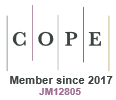Just Accepted
This article has been peer reviewed and accepted for publication. It is in production and has not been edited, so may differ from the final published form.
Hormonal and cytomorphological influences on the primary and secondary sex ratio in mammals
Abstract
The main purpose of this review article was to examine the existing and potential ways to predict and manipulate the sex of mammalian offspring using hormonal cues and treatments. We focused on the theories and research surrounding the potential endocrine and paracrine determinants of primary and secondary sex ratios in mammals; the primary sex ratio refers to sex distribution after fertilization and the secondary sex ratio refers to offspring sex. Several structural and functional differences between Y and X sperm can impinge on their migration and fertilizing ability in different hormonal milieux. A variety of hormonal cues, including those acting on gamete formation, transport, and sperm-oocyte interactions, can also affect the primary sex ratio. Secondary sex ratios may be altered during the entire period leading up to birth by pre-implantation and post-implantation factors. Hormones such as estradiol, testosterone, cortisol, progesterone, and gonadotropin-releasing hormone/gonadotropins, exert an effect on offspring sex ratios as evidenced by both in vitro and in vivo studies. The application of exogenous hormones at specific times during the female reproductive cycle/early gestation or during normal sperm production/storage in males to manipulate sex ratios would be more sustainable than currently used sex selection methods. However, hormonal interventions are still less efficacious and predictable than using sex sorted semen or prenatal diagnostics preceding embryo transfers or elective abortions.
RD24193 Accepted 16 May 2025
© CSIRO 2025



